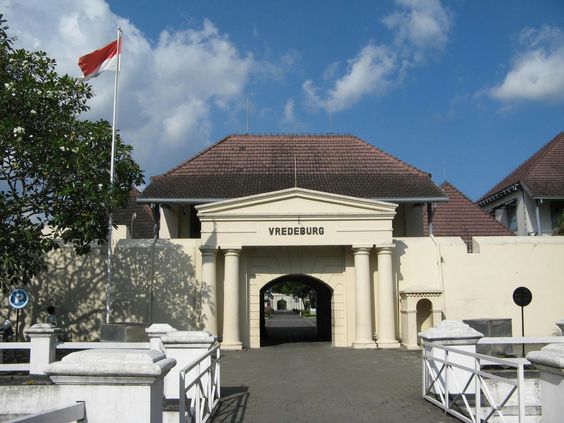The Yogyakarta Grand Building, or what is often referred to as the Yogyakarta Palace Grand Building, is a historical building that has an important role in Indonesian history and culture. This building is located in the Yogyakarta Palace complex, a site which is the center of culture and government of the Yogyakarta Sultanate. In this article, we will explore the long history of Gedung Agung, its role in the development of Yogyakarta, and how this building is still relevant in a modern context.
Historical Background
Gedung Agung was built during the reign of Sri Sultan Hamengkubuwono IX, who was in power from 1940 to 1988. This building had a dual function, namely as a place for palace ceremonies and also as the sultan’s residence. Construction of the Agung Building began in 1966 and was completed in 1970. The architect of this building was Ir. R. Soedarno, a famous architect from Indonesia.
Architecture and Design
Gedung Agung has an architectural design that reflects a combination of traditional Javanese style with modern elements. The exterior of this building depicts classic Javanese architecture with a gable roof, but with a modern touch on the building facade. The front of the Agung Building is decorated with reliefs that tell the long history of the Yogyakarta Sultanate.
The back side of the Agung Building faces North Alun-Alun, one of the famous squares in Yogyakarta. This provides a spectacular view when you stand in front of this building.
Role as a place where palace ceremonies take place
Since its inception, Gedung Agung has functioned as a venue for important palace ceremonies. Inside, there are several rooms that have their respective roles in the cultural ceremonies of the Yogyakarta Palace. One of the famous rooms is the Great Prabayeksa Room, where the king’s appointment and other important ceremonies were held.
Apart from that, there is also the Jayengrono Great Room, which is used for promotion ceremonies for abdi dalem (palace employees) and other traditional ceremonies. These spaces are filled with impressive artistic details, including wood carvings and traditional Javanese ornaments.
Role as the Sultan’s Residence
Apart from being a place where palace ceremonies take place, the Agung Building is also used as a residence for the sultan and his family. The sultan’s private rooms were located inside the building, hidden from public view. This creates a unique experience, where the building doubles as a public and private space.
Change in a Modern Context
Over time, the role of Gedung Agung as the sultan’s residence has changed. In 1988, Sri Sultan Hamengkubuwono IX died, and his son, Sri Sultan Hamengkubuwono X, took over the throne. This new leadership brought changes in the use of the Agung Building.
Currently, Gedung Agung is no longer used as the sultan’s residence. On the other hand, this building is used for offices and government events of the Sultanate of Yogyakarta. One of the most striking changes is the use of several rooms in the Agung Building as administrative offices for the Sultanate.
Cultural and Tourism Interests
Yogyakarta Great Building still has important value in the context of culture and tourism. Every year, cultural events and traditional palace ceremonies are still often held in the Gedung Agung complex. This includes ceremonies such as Grebeg Maulud, Garebeg Ceremony, and many more. These events attract thousands of visitors from home and abroad who want to witness the rich culture of Yogyakarta.
Apart from that, the Agung Building is also often a location used by local governments for important events such as conferences, high-level meetings and state ceremonies. Its majestic and historic presence makes it the right choice for these types of events.
Memories of Sri Sultan Hamengkubuwono IX
Gedung Agung also has symbolic value in commemorating Sri Sultan Hamengkubuwono IX, who is one of the most respected figures in modern Indonesian history. He was a figure who played an important role in the struggle for Indonesian independence and later became the wise governor of DIY (Yogyakarta Special Region).
As the place where Sri Sultan Hamengkubuwono IX once lived and ruled, Gedung Agung is a place full of memories of his leadership and services in advancing Yogyakarta and Indonesia.
Yogyakarta Grand Building is living proof of Yogyakarta’s long history and rich culture. This building has a unique role in the development of the palace and Yogyakarta as a whole. Even though its role has changed over time, Gedung Agung remains an important place in preserving Indonesia’s cultural and historical heritage.
When you visit Yogyakarta, don’t miss the opportunity to explore the Agung Building and feel the aura of history that lives inside. This building is not just a historical symbol, but also an integral part of the identity and pride of the people of Yogyakarta. By appreciating and understanding its role, we can more deeply respect and celebrate the cultural heritage provided by Gedung Agung Yogyakarta.
Yogyakarta Grand Building Opening Hours and Address
Gedung Agung Yogyakarta, also known as Gedung Agung Keraton Yogyakarta, is one of the most iconic historical sites in Yogyakarta, Indonesia. To better plan your visit to this place, it is important to know its opening hours and address. This article will provide information related to this.
Address of Yogyakarta Grand Building
The official address of Gedung Agung Yogyakarta is:
Yogyakarta Grand Building
Jl. Rotowijayan Block No. 1, Panembahan, Kraton, Yogyakarta, Special Region of Yogyakarta, Indonesia
Gedung Agung is located in the center of Yogyakarta City, which makes it easily accessible to tourists. In the surroundings, you will find various other interesting places, including the Yogyakarta Palace, Malioboro, and various restaurants and souvenir shops.
Yogyakarta Grand Building Opening Hours
Gedung Agung Yogyakarta has certain operating hours that you need to know before visiting. The opening and closing hours of Gedung Agung are as follows:
– Weekdays: Gedung Agung is usually open every Monday to Friday, except national holidays. Operational hours are from 08.00 am to 03.00 pm.
– Saturday: On Saturday, Gedung Agung is also open to the public. Opening hours on Saturdays are from 08.00 am to 01.00 pm.
– Sundays and National Holidays: On Sundays and national holidays, Gedung Agung Yogyakarta is closed to the public. Therefore, it is best to avoid visiting Gedung Agung on these days if you plan to see the building from inside.
Vital Records
– Palace Holidays: Apart from national holidays, Gedung Agung can also be closed to the public at certain times related to traditional ceremonies and celebrations at the Yogyakarta Palace. Therefore, it is best to check your visit schedule in advance or contact local authorities to ensure that Gedung Agung is not closed on the day you plan to visit.
– Entrance Ticket: To enter the Yogyakarta Grand Building, an entrance fee is usually charged. Ticket rates can differ between local tourists and foreign tourists. Make sure to check the latest ticket prices before visiting Gedung Agung.
– Appropriate Clothing: Since Gedung Agung is part of the Yogyakarta Palace complex, visitors are expected to wear modest clothing and in accordance with palace etiquette. Avoid wearing clothes that are too revealing or flashy.
Now, with this information, you can better plan your visit to Gedung Agung Yogyakarta. Don’t forget to check the latest schedules and ticket prices before going, and enjoy a rewarding experience exploring one of Yogyakarta’s most important historical heritages.





